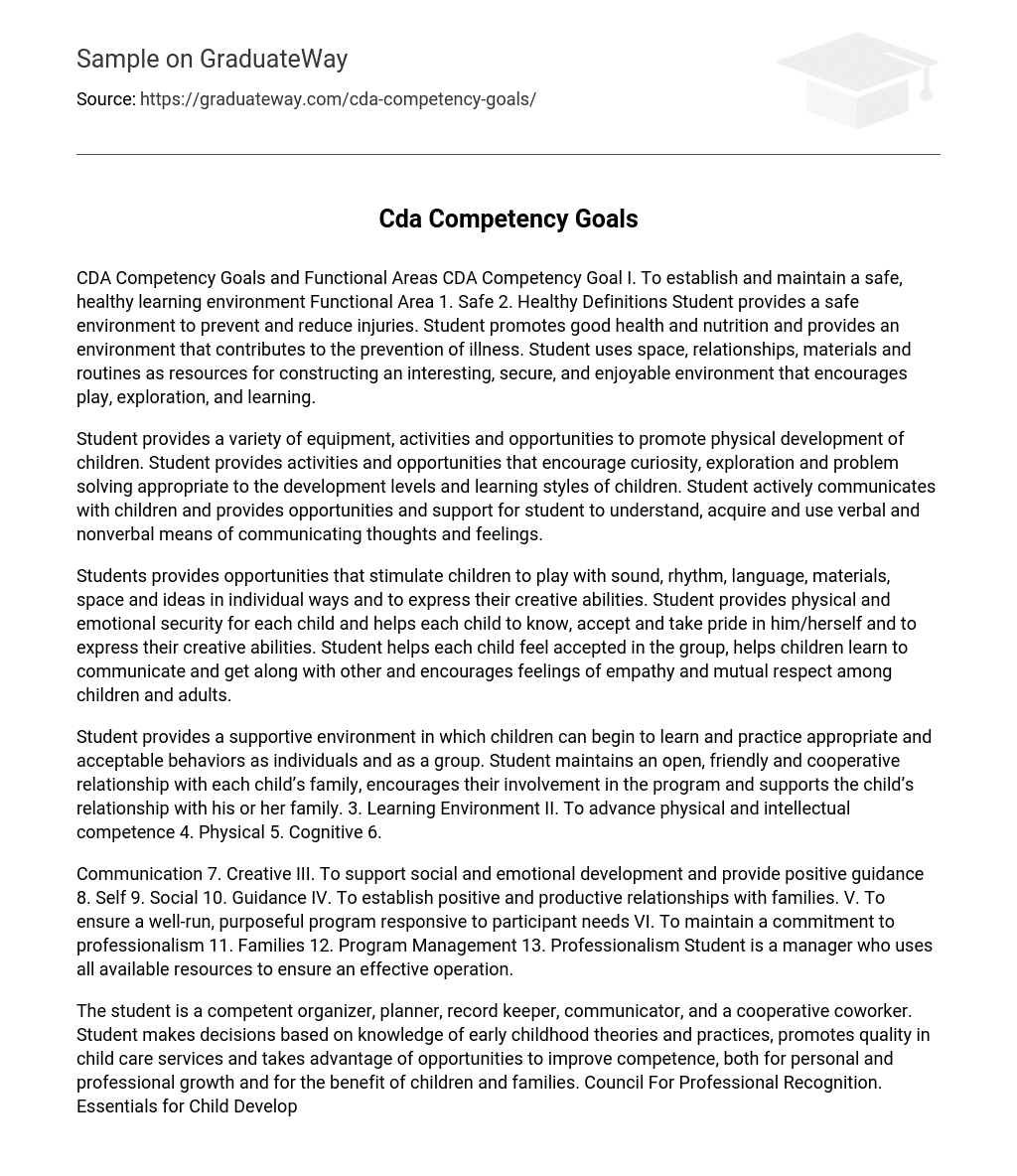CDA Competency Goals and Functional Areas CDA Competency Goal I. To establish and maintain a safe, healthy learning environment Functional Area 1. Safe 2. Healthy Definitions Student provides a safe environment to prevent and reduce injuries. Student promotes good health and nutrition and provides an environment that contributes to the prevention of illness. Student uses space, relationships, materials and routines as resources for constructing an interesting, secure, and enjoyable environment that encourages play, exploration, and learning.
Student provides a variety of equipment, activities and opportunities to promote physical development of children. Student provides activities and opportunities that encourage curiosity, exploration and problem solving appropriate to the development levels and learning styles of children. Student actively communicates with children and provides opportunities and support for student to understand, acquire and use verbal and nonverbal means of communicating thoughts and feelings.
Students provides opportunities that stimulate children to play with sound, rhythm, language, materials, space and ideas in individual ways and to express their creative abilities. Student provides physical and emotional security for each child and helps each child to know, accept and take pride in him/herself and to express their creative abilities. Student helps each child feel accepted in the group, helps children learn to communicate and get along with other and encourages feelings of empathy and mutual respect among children and adults.
Student provides a supportive environment in which children can begin to learn and practice appropriate and acceptable behaviors as individuals and as a group. Student maintains an open, friendly and cooperative relationship with each child’s family, encourages their involvement in the program and supports the child’s relationship with his or her family. 3. Learning Environment II. To advance physical and intellectual competence 4. Physical 5. Cognitive 6.
Communication 7. Creative III. To support social and emotional development and provide positive guidance 8. Self 9. Social 10. Guidance IV. To establish positive and productive relationships with families. V. To ensure a well-run, purposeful program responsive to participant needs VI. To maintain a commitment to professionalism 11. Families 12. Program Management 13. Professionalism Student is a manager who uses all available resources to ensure an effective operation.
The student is a competent organizer, planner, record keeper, communicator, and a cooperative coworker. Student makes decisions based on knowledge of early childhood theories and practices, promotes quality in child care services and takes advantage of opportunities to improve competence, both for personal and professional growth and for the benefit of children and families. Council For Professional Recognition. Essentials for Child Development Associates Working with Young Children. Washington, DC: 1991





